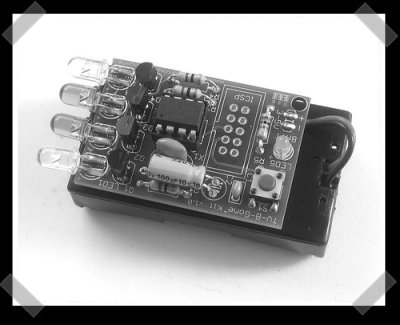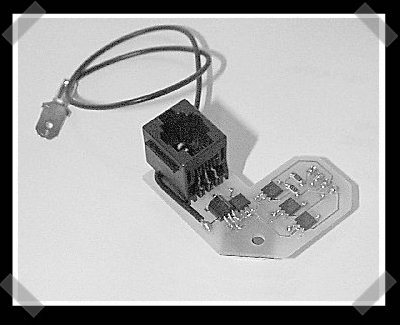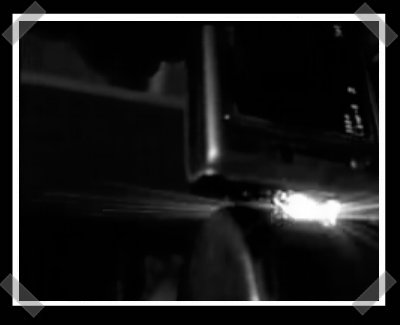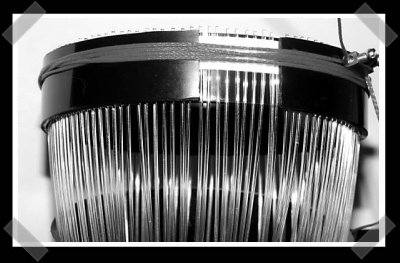It’s been a while since we’ve had a fresh How-To on the Hack-A-Day, and frankly we’ve missed them. To get things rolling, [Eliot] and I wanted to build a good knowledge base to help you hack your own stuff. I know that soldering won’t be new to many of our readers, but everyone has to start sometime. Our hope is simple: that this new series of How-To’s will help inspire new and experienced hackers alike.
Month: October 2007
High Power TVBGone

[Ladyada]’s been busy lately. [bladdo] wrote in to tell me that she put together an extra powerful kit version of the TVBgone. This one’s supposed to be good for over 100 feet. If you really, really want to get your ass kicked during the super bowl, this baby in a sports bar should do the trick. There’s an optional programming header, so you could program it to turn every TV onto the SciFi channel.
Remember, I want to hear about your hacks! Use the tips line to send ’em in.
1-wire Thermostat Control

For some reason, computer controllable thermostats are pretty freakin’ expensive. I found a reference to a 1-wire thermostat in this(mirror) sample senior project on home automation. It turns out that Dallas Semiconductor put one together a while back as an application for their TINI platform. (web-application server on a chip). The write-up has since vanished from their site, but I found it thatnks to archive.org. The thermostat used to run about $50, and a similar model still seems to be produced. The 1-wire interface is pretty simple – Maxim’s TINI board to control it: not so much. Just using the 1-wire interface with an inexpensive thermostat and controlling from a PC seems pretty viable to me. Just in case, I mirrored the 1-wire interface schematics here.
Cell Phone Taser

I’m not going to reccomend it, but [cameron] modded his Sony Ericsson k800i to tase people as well as take pictures. Apparently, the k800i has a xenon flash – meaning that it’s got a high voltage potential available to drive the flash. He added a pair of 16uf caps and scored a good 300 volts to share with the unlucky.
ToorCon 9: Retrieving WEP Keys From Road Warriors

[Vivek Ramachandran]’s Cafe Latte attack was one of the last talks we caught at ToorCon. I’ve found quite a few articles about it, but none really get it right. It’s fairly simple and deals with cracking WEP keys from unassociated laptops. First your WEP honeypot tells the client that it has successfully associated. The next thing the client does is broadcast a WEP encrypted ARP packet. By flipping the bits in the ARP packet you can replay the WEP packet and it will appear to the client to be coming from an IP MAC combo of another host on the network. All of the replies will have unique IVs and once you get ~60K you can crack it using PTW. The bit flipping is the same technique used in the fragmentation attack we covered earlier, but Cafe Latte requires generation of far fewer packets. You can read about the Cafe Latte attack on AirTight Networks.
Tengu Clone

[Alex] sent in his clone of [Crispin Jones]’ tengu. The tengu is essentially a funky visual sound meter that looks like it’s lip syncing. [Alex]’s version is built around an ATMega48 microcontroller, an electric mic with a LM386 audio circuit and the required LED matrix display. There’s an example tengu video here – but I’m not sure what to say about the song in the demo. It’s not dependent on USB – it actually works better with the clean power provided by batteries anyway.
Fiber Optic Flash Ring

Ring lights that surround the lens are generally used for macro photography – they’re not cheap, but they’re one of the few ways to get shadowless photos. This fiber optic flash diffuser is based on the same ideas of this one. Rather than use a few large optic strands, [Joris] is using many, many more to decrease shadows as much as possible. His previous efforts are even more interesting. He built a LED version – with serial connected LEDs and a step up switching power supply to drive them. Then he moved on to cold cathode fluorescent before moving onto the fiber optics.












